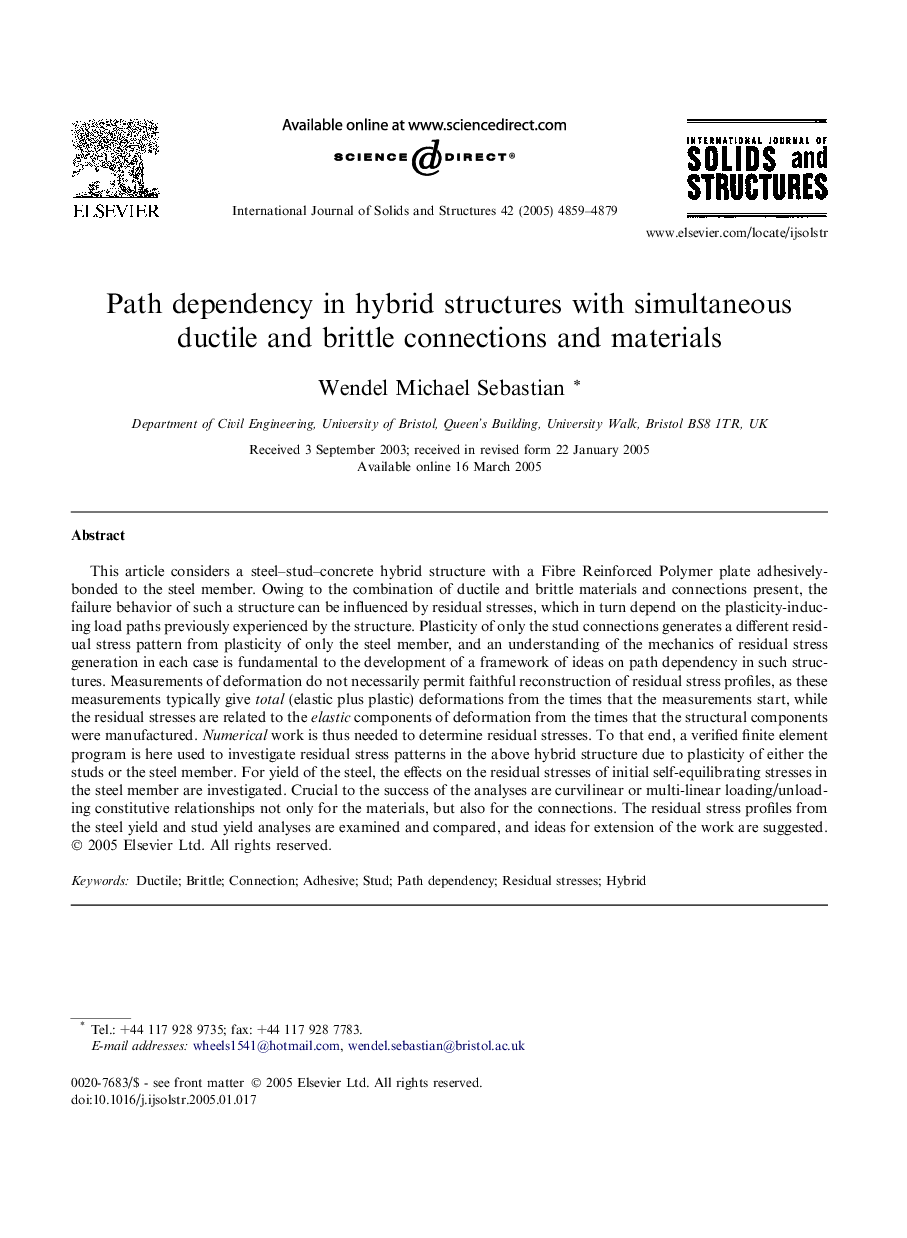| Article ID | Journal | Published Year | Pages | File Type |
|---|---|---|---|---|
| 281123 | International Journal of Solids and Structures | 2005 | 21 Pages |
This article considers a steel–stud–concrete hybrid structure with a Fibre Reinforced Polymer plate adhesively-bonded to the steel member. Owing to the combination of ductile and brittle materials and connections present, the failure behavior of such a structure can be influenced by residual stresses, which in turn depend on the plasticity-inducing load paths previously experienced by the structure. Plasticity of only the stud connections generates a different residual stress pattern from plasticity of only the steel member, and an understanding of the mechanics of residual stress generation in each case is fundamental to the development of a framework of ideas on path dependency in such structures. Measurements of deformation do not necessarily permit faithful reconstruction of residual stress profiles, as these measurements typically give total (elastic plus plastic) deformations from the times that the measurements start, while the residual stresses are related to the elastic components of deformation from the times that the structural components were manufactured. Numerical work is thus needed to determine residual stresses. To that end, a verified finite element program is here used to investigate residual stress patterns in the above hybrid structure due to plasticity of either the studs or the steel member. For yield of the steel, the effects on the residual stresses of initial self-equilibrating stresses in the steel member are investigated. Crucial to the success of the analyses are curvilinear or multi-linear loading/unloading constitutive relationships not only for the materials, but also for the connections. The residual stress profiles from the steel yield and stud yield analyses are examined and compared, and ideas for extension of the work are suggested.
